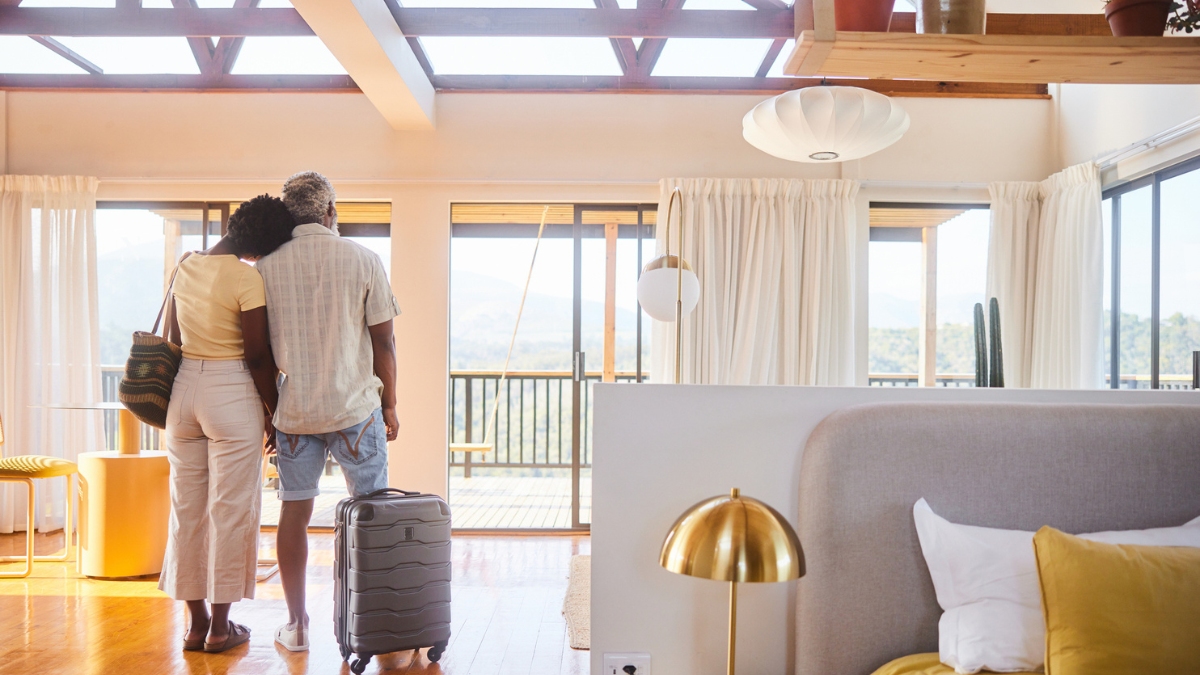
It’s Saturday morning and I’ve just woken up in the bed of a former professional footballer, whose home, just outside the UK city of Manchester, recently featured in Hello magazine.
Pulling back the thousand-thread cotton sheets it seems possible I’m in a bizarre travel fantasy involving the one-time youth player for Manchester United, the team I’ve supported all my life.
Then, as my feet connect with the underfloor heating in the swish ensuite, the illusion is broken: “Dad, what time are we leaving for the match?” asks my daughter, from the foot of the plushly-carpeted stairs.
This luxury rural pad is one of four house swaps we’re doing in England – a decision which has made this three-week trip much less financially ruinous than it would otherwise have been. With two teenage kids, the flights from Australia alone are enough to take your breath away, so anything that saves on accommodation is worth considering. (It also meant I could splash out on seeing United play.)
What is home swapping?
Part of the ‘shared economy’, the concept is simple: participants offer their home – aka most people’s biggest asset – in exchange for stays in desired destinations.
Like online dating for home owners, house swapping has been around since the 1950s, when US school teachers began exchanging their east and west coast homes for holidays. But right now, with people desperate to travel again after the pandemic but restricted by cost-of-living pressures, home swapping is a growing trend.
In Australia, membership of HomeExchange.com – the platform we used – is up 73 per cent this year (compared to 46 per cent globally), with 85 per cent more swaps done by Aussie members, in 2023.

With a well-chosen home swap, you too could wake up to a view of the Eiffel Tower. Photo: Getty
How it works
While methods vary between sites, there are a few key ways to swap.
The holy grail is a simultaneous exchange, in which both home owners travel at the same time. Finding someone whose timeframe and dream location fit yours exactly, though, is rare. We’ve done 10 swaps over the years – including a Parisian apartment with views of the Eiffel Tower and the Seine and a Suffolk cottage built in 1780 – and only once has it been a simultaneous exchange.
Far more common are non-simultaneous swaps, where guests borrow your home, and you might borrow theirs at a later date, or ‘rent’ an entirely different property using points accumulated by having guests stay at your home.
Most sites charge a reasonable annual membership fee, while others have tariffs (including cleaning cost) per trip, without a membership fee. Some, including HomeExchange, provide insurance cover for damage. And ultimately, the more members a site has, the higher your chance of finding a match that works for you.
Pros and cons
Patience and flexibility are key. For our UK trip, it took three months’ research to find suitable points exchanges. Only one in eight swap requests was successful, and even then, most were not exactly where we’d initially hoped to stay. When I couldn’t find a swap in central Manchester I widened the search to include the surrounding countryside, and found the footballer’s house. So – silver linings.
Still, the cost savings – $6-8000 for us, over 22 nights – make it undeniably worthwhile. What’s more, everywhere we go, we all have ample space (and our own bedrooms), which would not have been affordable in a hotel.

With travel still a priority despite the cost-of-living crisis, many Australians are looking for smart ways to budget for it. Photo: Getty
Launched in April 2023, London-based Twincity has just started accepting members from Sydney and Melbourne, following huge interest. Their aim, is to help “members find their Twin – a like-minded individual in another city that they can not only swap homes with, but also become friends with,” says co-founder Isaac Young. “The personable experience makes home swapping a much more authentic way to travel than staying in an Airbnb.”
This connection with other home owners is certainly a positive for us. It develops in the lead-up to stays through WhatsApp messaging, and continues by meeting owners like former footballer Joe Thompson and his wife Chantelle, at their Manchester home.
There is also the sense of staying in a home-away-from-home, as Gwen Caplan – whose London flat we stayed in and who has been exchanging houses for 20 years – points out. “Swappers share their lives unlike a hotel or airbnb,” she says. “It allows us to live like a local, shop and eat where locals do.”
Other plusses include more sustainable adventures – aussiehouseswap.com.au claims that home exchange cuts CO2 emissions by 60 per cent, compared with hotel accommodation – and more socially responsible travel.
“When you travel via home swapping,” says US-based site LiveKindred on its blog, “you’re saying no to the cycle of property investment that often leads to rent increases and displacement of local residents.”
All up, for us, the pros far outweigh the cons. The experience of having swappers come to my home, in return for points, has been generally good, with most leaving the house spotless. But it’s the cost savings that have really turned me into a house-swapping devotee.
Next time, I may not end up in a footballer’s bed, but I have just booked a cottage in the “chocolate box village” of Steyning, in rural Sussex, and that suits me fine.